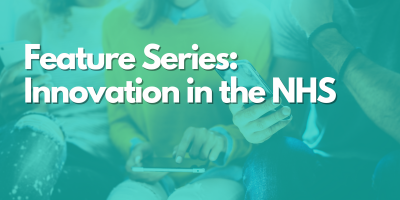A new five-year digital and data transformation strategy from Bradford Teaching Hospitals (BTHT) has launched this week, highlighting the trust’s focus and plans around interoperable care pathways and systems, AI and automation, the modernisation of digital services, and digital literacy.
Five strategic areas of activity are outlined, covering people, digital teams and talent; digital standards, leadership and services; data driven care and decisions; digital and workflow optimisation; and clinical optimisation and interoperability.
On attracting, developing and retaining the “best, brightest digital talent from across the region”, BTHT commits to promoting “outstanding” digital leadership through the adoption of a leadership development regime, and supporting a culture of innovation and continuous professional development to include digital skills. Recent successes, the strategy reports, include a programme of leadership development, investments in technical capabilities to mitigate technical debt, a training and recruitment programme which has helped develop and introduce new skills to prepare for the future, and the expansion of clinical informatics.
A data and information management strategy is to be developed, the strategy shares, and a data architecture model for data and integration will be established to support data quality governance and confidence across the trust. An IT strategy and plan will focus on optimising, consolidating and future-proofing BTHT’s technology, whilst an Applications Portfolio will be developed and executed for the trust’s application estate. Elsewhere the strategy points to work around cyber security and information governance, change management, and continual service improvement.
For the trust’s third objective supporting data driven care and decisions, the strategy shares recent successes such as its Insights Centre which offers staff access to metrics aligned with Making Data Count principles, a waiting list management and validation app, and an outpatient procedures dashboard. Plans in this space look to a move toward predictive analysis rather than reporting, including the adoption of the Federated Data Platform, a refresh of Command Centre activities, and the development of real-time self-service CSU performance dashboards.
On digital and workflow optimisation are the trust’s successes in deploying patient consent, a full upgrade of its underlying network, and in employing robotic process automation in “a variety of areas to automate repetitive tasks”. Looking ahead, ambitions involve work to improve digital education and digital literacy, to explore and adopt AI “as standard” in areas such as waiting list management and ambient AI, and the deployment of a range of modern tooling through the Microsoft 365 suite. A refreshed patient engagement portal will support BTHT’s Transforming Outpatient Pathway programme, and digital disciplines and “transformational methodologies” will similarly help toward the Transforming Emergency Department initiative.
The trust next moves on to outline some specific aims around automation and AI, sharing existing success in automating outpatient coding and the booking of patients referred from ERS direct into EPR. Some of the avenues BTHT plans to explore include ambient AI for clinical notes, AI to help predict those at risk of becoming frequent users of emergency services and to support wider prevention and detection efforts, AI to predict and manage DNAs, and the automation of homecare prescription processing.
For the final objective on clinical optimisation and interoperability, the new strategy offers examples of the trust’s successes in implementing theatre and critical care services to its EPR, the introduction of a new WYAAT Pathology LIMS, and the adoption of a new digital pathology system. Over the next five years, the trust aims to undertake a “comprehensive assessment” of digital and data maturity across clinical specialties and CSUs to inform a plan of support, optimisation and development. Optimisation will also be the focus for EPR and clinical systems.
BTHT shares its approach to the delivery of optimisation work across six stages: assess, engage, define, develop, implement, and share. From assessing current state and identifying gaps or opportunities, through to engaging with key stakeholders, defining goals, developing and implementing an action plan, and communicating results; the trust commits to applying “a refreshed end-to-end methodology which will ensure well-designed, coproduced and clinically driven change”.
Digital transformation, strategy and change from across the health sector
Last year, HTN visited Bradford Teaching Hospitals to learn how its Command Centre works. We heard what it means for operational performance; the impact on the emergency department, patient flow, discharge, deterioration management, and the hospital’s operations at night; and the trust’s plans for the future.
Our most recent HTN Now panel discussion focused on the role of the CNIO in digital transformation, both now and in the future, considering its importance in driving digital transformation, and its value in linking digital with clinical operations. Our expert panellists, Sarah Hanbridge, CCIO at Leeds Teaching Hospitals; Johanna Kelly, CNIO at Maidstone and Tunbridge Wells; and Rhian Bulmer, chief partnerships officer at Radar Healthcare; shared their experience and insight.
The first instalment of our Primary Care Region Series explored the latest in digital in primary care from across the London region, including in digital strategy, PCARP recovery, wider insights, and more. We spoke with Dr Shanker Vijayadeva, GP and London region GP clinical lead for digital transformation in primary care at NHS England, who highlighted the impact of recent announcements about cuts to NHSE and ICBs on what can be planned for next 12 months. Due to these changes, “digital plans/prioritises are more focussed on “keeping the lights on” for basic functionality (e.g. messaging to patients, online consultation etc)”, he said.
Suffolk and North East Essex ICB shared an update on digital progress as part of the board’s latest meeting in March, highlighting work underway and benefits realisation on shared care records, future systems, digitising social care, EPR, and more. Priorities that the system is working toward span an ICS-wide cyber strategy and system response procedure, having a single EPaCCS system, enabling a unified approach to digital care, ensuring all care providers have a digital social care record and connection to the social care integration platform to enable interoperability with the shared care record, and developing a long-term shared care record strategy looking at linking with ICSs in the region.






